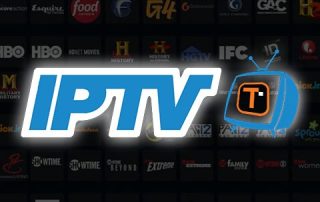In the ever-evolving landscape of home entertainment, consumers are faced with a variety of options when it comes to accessing their favorite television content. Among the most notable alternatives today are IPTV premium services, which have emerged as a compelling alternative to traditional cable television. This shift from conventional cable to Internet Protocol Television marks a significant transformation in how viewers consume media, offering flexibility and variety that traditional providers often struggle to match.
With the rise of streaming platforms and a growing reliance on the internet for entertainment, understanding the differences between IPTV services and traditional cable models becomes increasingly essential. IPTV allows users to stream content over the internet, providing access to a wider range of channels and on-demand programming. In this article, we will delve into the features, advantages, and disadvantages of IPTV premium services compared to traditional cable, helping viewers make informed choices about their entertainment options.
Cost Analysis

When comparing IPTV premium services to traditional cable, one of the most significant factors to consider is the cost structure. IPTV services typically offer a range of pricing options depending on the level of service and the channels included. Basic packages may start at a lower price point compared to cable subscriptions, allowing consumers to enjoy a variety of channels without the heavy financial burden often associated with traditional cable providers. Additionally, many IPTV services offer competitive promotional rates for new customers, enhancing their appeal.
On the other hand, traditional cable often comes with hidden fees and additional charges that can inflate the overall cost. Installation fees, equipment rental costs, and mandatory bundles can make traditional cable subscriptions much more expensive than their IPTV counterparts. Furthermore, long-term contracts with cable companies can lock customers into a commitment that may not align with their viewing habits or preferences. This complexity in pricing can deter potential subscribers from traditional cable, making IPTV a more attractive option.
Lastly, while IPTV services may require an internet connection, which is an additional cost to consider, many households already have internet access. This makes the switch to IPTV less daunting financially. Moreover, the flexibility of IPTV allows users to customize their channel selections and pay only for what they want to watch, providing a potentially more cost-effective solution overall. Therefore, when evaluating the cost analysis, IPTV services frequently emerge as the more economical choice for consumers seeking diverse viewing options.
Content Variety
One of the standout features of IPTV premium services is the extensive array of content available to subscribers. Unlike traditional cable, which typically offers a set number of channels based on package tiers, IPTV services provide access to a vast library of content that includes live TV, on-demand shows, and movies. iptv premium find themselves with a greater selection of niche channels, international programming, and specialty content that may not be available with traditional cable providers.
In addition to the breadth of channels, IPTV services also frequently update their libraries with the latest releases and trending shows, keeping viewers engaged and entertained. Users can explore a range of genres and formats, including documentaries, sports, and exclusive series that cater to specific interests. This flexibility allows subscribers to create a personalized viewing experience, easily discovering new content that meets their preferences.
Furthermore, many IPTV premium services integrate features such as catch-up TV, which allows users to watch previously aired programs, and time-shifting capabilities that enable viewers to enjoy their favorite shows at their convenience. This level of control over viewing choices enhances the overall entertainment experience, making IPTV a compelling option for those seeking diverse content and flexible viewing options compared to traditional cable television.
User Experience
The user experience with IPTV premium services is often more streamlined and user-friendly compared to traditional cable. Most IPTV providers offer intuitive interfaces that allow users to easily navigate through channels, on-demand content, and other features. The ability to search for specific shows or movies quickly enhances the overall experience, reducing the frustration often associated with cumbersome cable menus.
Another significant aspect of IPTV is the flexibility it provides in terms of viewing options. Users can stream content on multiple devices, such as smartphones, tablets, smart TVs, and computers. This multi-device support means that viewers can enjoy their favorite shows or channels from virtually anywhere, making it a convenient choice for those with varying lifestyles. Additionally, many IPTV services allow for the creation of personalized watchlists, further enhancing customization.
Customer support is also a crucial factor in the user experience of IPTV services. Most premium providers offer 24/7 support through various channels like live chat, email, or phone, ensuring that subscribers receive timely assistance when needed. This level of service usually outshines traditional cable providers, where support may be limited and not as responsive, thus improving overall satisfaction for users who opt for IPTV.
